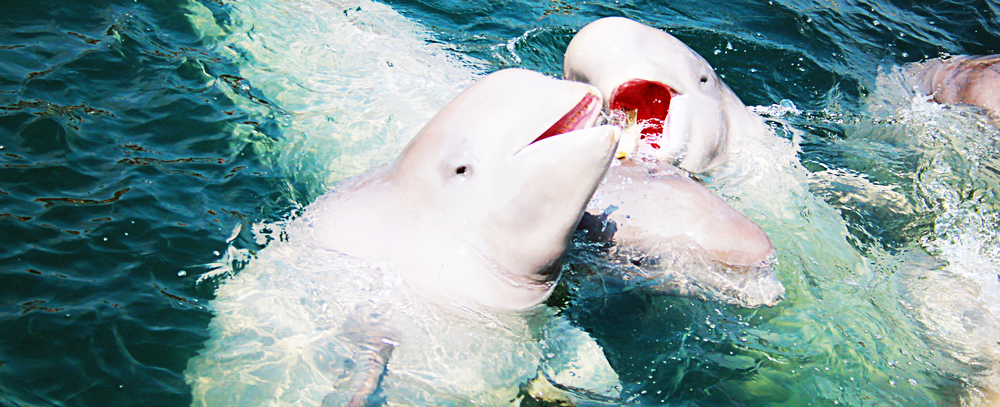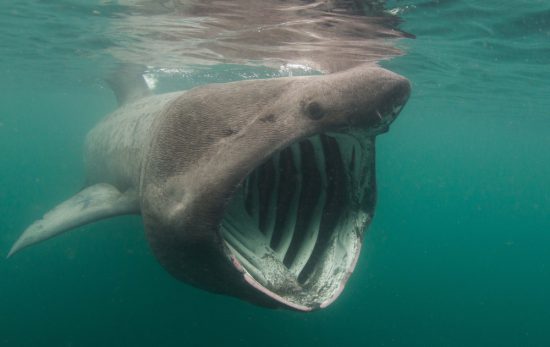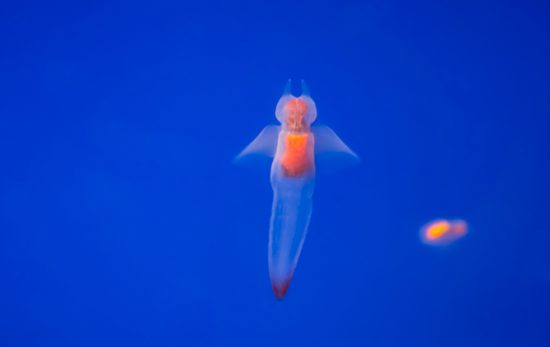
Melonhead, the canary of the seas, the white whale, no matter what nickname you give the beluga whale, they’re instantly recognisable. With flawless white camouflage and a superior echolocation system, these sociable Arctic singers have adapted perfectly to life under the ice.
[box]Adult male belugas can range from 3.5 to 5.5 meters / 11 to 18 feet.Females measure 3 to 4.1 meters / 10 to 14 feet.
Males weigh between 1,100 and 1,600 kg / 2,425 and 3,527 lbs, occasionally up to 1,900 kg (4,190 lbs). Females weigh between 700 and 1,200 kg / 1,543 and 2,646 lbs.
Totally white.
No dorsal fin.
Bulbous melon.
Maestro of echolocation.[/box]
The White Whale
The most striking feature of this toothed whale is its completely white colour. From melon to tail, these fascinating animals have no pigment in their skin, having lost all pigmentation by the time they turn 7 years old. Prior to that, the calves are grey and then dark blue. This adaptation to arctic life helps camouflage the beluga amongst the ice from its main predators – killer whales, polar bears and Arctic people!
Another evolutionary adaption to living under the ice is the lack of a dorsal fin. Without a dorsal fin, the beluga can more easily swim below the ice to locate breathing holes, as well as having less surface area to reduce heat loss. Instead of the dorsal fin, beluga have a dorsal ridge with a hardened crest that allows them to break through ice to make breathing holes.
Melonhead
Known as melonhead, the beluga has a much more bulbous melon than other toothed whales and dolphins. The melon is a key organ in communication and echolocation and located, quite unsurprisingly, on the head. Beluga use echolocation to hunt prey and find breath holes in the ice. It does this by producing a rapid sequence of clicks that pass through the melon, creating a sound beam. The beam is projected through the water, enabling the beluga to read the returning echoes and interpret its surroundings. If you can’t see a beluga, they can most likely see you!
Beluga whales are not fussy eaters either. On their diet of fish, fish and fish, you’ll also find a large quantity of invertebrates. If they’re not scoffing down Arctic cod or Pacific salmon, they’ll be hunting for squid, octopus and crabs. As the beluga teeth are neither sharp nor long, most of the prey gets swallowed whole too! Now that’s a grim way to go!
Learn more about whales, dolphins and porpoises, which are called cetaceans, and are thought to be ancient relatives of the hippopotamus.


